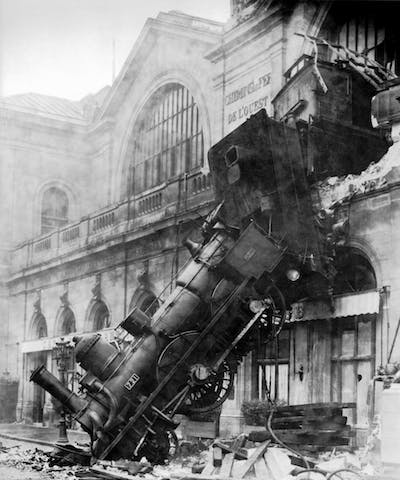
Rental Repairs- Who PAYS?
Maintenance and repairs are a constant issue, when it comes to managing a rental property whether it be an agency or private owner.
To offer some clarification around these issues the Consumer Building & Occupational Services (CBOS) have provided some guidelines, outlined below, for owners/ agents and tenants to adhere to.
Pests in rental properties
Tenants should try to prevent or remove pests themselves, using reasonable methods.
If they are not having any luck, the tenant should notify the owner of the need for repairs. The owner then has an obligation to get rid of the pests or treat the cause of the pests.
– for example, ants continue to enter the property in large proportions. The tenant’s use of ant rid or ant-sand for several weeks is unsuccessful. The tenant has ensured that they are not leaving anything around that the ants are seeking. The tenant notifies the owner of the ant problem and the steps they have taken to remove the ants. The owner has the property fumigated.
A tenant should try and resolve the issues with the owner first. However, a tenant can serve the owner with a Notice to Terminate if they believe the owner has breached the lease by failing to do repairs. They can do this even if they have applied for an Order for Repairs.
Sometimes a tenant has tried all reasonable ways and has asked the owner to help and does not want to move out. The tenant can apply to the Residential Tenancy Commissioner for an Order for Repairs. If an owner is ordered to do repairs and they do not do so within the timeframe, the Commissioner may issue the owner with a fine.
Mould in rental properties
Tenants should try and get rid of mould themselves, using reasonable methods, such as:
– properly ventilating the property
– heating the property, and
– cleaning mould off as it appears.
Sometimes mould is a persistent issue at the property and the tenant has made reasonable efforts which are not working. The tenant should notify the owner that repairs are needed. The owner has an obligation to get rid of the mould, or treat the cause of the mould.
A tenant should try and resolve the issues with the owner first. However, if a tenant believes the owner is in breach of the lease by failing to have repairs undertaken, they can serve the owner with a Notice to Terminate. They can do this even if they have applied for an Order for Repairs.
If a tenant has tried all reasonable methods and has asked the owner to help, but the owner is refusing to help, or their attempts have not helped, the tenant can apply to the Residential Tenancy Commissioner for an Order for Repairs.
Chimney and flue cleaning
Cleaning the flue of a wood heater is an owner’s responsibility.
Although a tenant uses the wood heater and causes the flue to need cleaning, the operation of the flue is a maintenance issue. It is similar to ensuring a heat pump is serviced and working properly, and is not something a tenant can reasonably do themselves.
However, if the tenant burns something in the wood heater that causes specific damage to the flue, this will be the tenant’s responsibility to fix.
A tenant is responsible for cleaning the wood box of the wood heater, if it was clean at the beginning of the tenancy.
Gardening, lawns, trees and shrubs
Tenants are responsible for gardening including lawn mowing, weeding and trimming edges during and at the end of the tenancy.
When a tenant moves out, they must leave the garden in the same state it was in at the beginning of the tenancy.
An owner is responsible for gardening such as trimming, pruning, removing berry canes or climbing vines.
A tenant must make all reasonable efforts to look after the garden, such as reasonable watering. If a large number of plants die during the tenancy due to a tenant not reasonably looking after the garden, the tenant can be responsible for the cost of replacement plants.
If a tenant wants to do work in the garden, such as installing garden beds or planting, or removing bushes, they should get the owner’s permission (in writing) first.
Gutters
In most cases, cleaning gutters is an owner’s responsibility, as it is a general maintenance task affecting the safe operation of the roof plumbing. The leaves and debris that clog guttering is not within a tenant’s control.
Tenants can use reasonable efforts within their means to keep gutters clean. However, a tenant is not expected to get onto a roof to do this.
Fuses, light globes, light tubes and tap washers
An owner is responsible for:
– fuses and tap washers
– inaccessible light bulbs and light tubes.
– Inaccessible depends on the ceiling height, bulb/tube type, and the tenant’s abilities
– lights such as oven lamps, security lights, heat lamps and down lights.
A tenant is responsible for accessible and non-specialist bulbs during the course of the tenancy. If the bulbs blow, the tenant is to replace them at their cost for their own use and enjoyment.
At the end of the tenancy, a tenant should ensure that all lights fittings that had bulbs at the beginning of the tenancy still have bulbs at the end.
NBN – installation, boxes and batteries
The installation of the NBN connection is the owner’s responsibility. A tenant should liaise with an owner if they are asked for installation directions from the NBN installer.
Connection to the NBN is the tenant’s responsibility, however, installation of any internal fixtures should only be done with the owner’s permission and direction.
If the property is rented to a tenant with NBN connectivity, the NBN battery is the owner’s responsibility. If the battery needs replacing during the tenancy, the tenant must ask the owner (or get the owner’s permission) to replace it. A tenant cannot take the battery with them at the end of the tenancy if a battery was supplied at the beginning.
Locks and security devices
The owner must ensure that the property has locks and security devices that are necessary to secure the property and that these are maintained during the tenancy. This incudes boarding houses, where the tenant’s room must be able to be secured.
If the property is not secured properly, the tenant should discuss this matter with the owner. If this does not resolve the matter, the tenant can apply to the Court for an order that adequate locks be installed. The tenant can only lodge a complaint with the Residential Tenancy Commissioner who can fine an owner for not ensuring locks are adequate. This may result in the owner fixing the lock issue.
If a tenant wishes to remove or change a lock, they must have the owner’s permission and must provide the owner with a key (or other opening device if the lock is a keyless one). If the owner does not give permission, the tenant can apply to the Court for an order allowing them to change it.
A tenant may change or remove a lock or security device without the owner’s consent and without a court order if a Family Violence Order or a Police Family Violence Order is in force for the protection of the tenant.
Rules for smoke alarms in rentals
The Residential Tenancy Act 1997 (the Act) requires owners to install and maintain smoke alarms for rented residential properties.
Owners of tenanted premises must ensure that smoke alarms are installed and maintained in accordance with the requirements set out in the Regulations.
Power source of smoke alarms
The owner must ensure that all alarms installed in rental premises are either permanently connected to the power supply of the premises, or are powered by a 10-year non-replaceable battery.
Smoke alarms permanently connected to the power supply of the rental premises must also have an alternative power supply as a back-up.
A smoke alarm containing a replaceable battery does not comply with the Regulations.
Placement of smoke alarms
The owner must ensure that alarms are installed at specified locations with regard to the class of residential building. This is to ensure that the smoke alarms are able to detect smoke before it reaches sleeping building occupants. For example, a standard Class 1a building (i.e. a house) requires a smoke alarm in any storey that contains a bedroom; in each corridor or hallway associated with a bedroom; or if there is no hallway in a space between the bedroom and the remainder of the premises.
Types of smoke alarms
An installed smoke alarm must comply with either of the below Australian Standards:
– AS 3786 – Smoke Alarms Using Scattered Light, Transmitted Light or Ionization; or
– AS 1670.1 – Fire Detection, Warning, Control and Intercom Systems– System Design, Installation and Commissioning – Part 1: Fire.
This means that ionisation or photoelectric smoke alarms may be installed.
Smoke alarms with removable 9 volt batteries do not comply with the standards and cannot be installed.



























